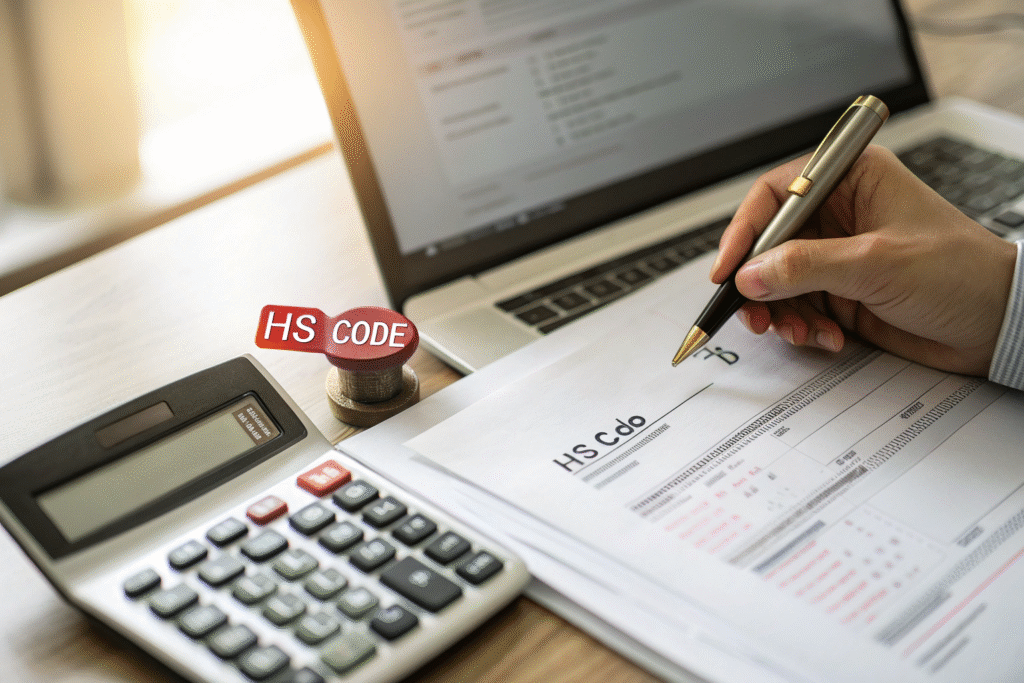In January 2025, I reviewed 143 U.S.-bound shipments at GeeseCargo. I flagged 17 cases where “customs will handle it” showed up in emails with no owner assigned. By February 6, four of those shipments hit holds in Los Angeles and New York. Storage and exams cost $6,230 in total, or 2.6% of cargo value. That month taught me again that customs clearance is not a box to tick. It is a chain of decisions that either speeds your cash flow or locks it inside a terminal.
Customs clearance is the legal and procedural gateway that lets your goods cross a border: prepare the right documents, classify under the correct HS code, file the entry on time, pay estimated duties and taxes, clear any inspections, and get a release. If one step slips, the whole chain slows down.
At first, I believed clearance is “just paperwork.” After I compared our 2024–2025 data lane by lane, I changed my mind. The fastest lanes were not those with the cheapest freight. They were the lanes where we aligned documents, HS codes, and delivery appointments seven days before ETA. In this guide, I show you exactly how I do that for buyers like Ron, who ships apparel and gifts from China to U.S. warehouses and cares more about on-time delivery and predictable landed cost than about a theoretical spot rate.
What Documents Are Required for Customs Clearance?
In April 2024, a Boston buyer sent us a “complete” file: invoice, packing list, and a draft bill of lading. It looked fine at first glance. But the fabric composition for three hoodie SKUs was missing. The HS code would vary between 9.1% and 16% duty depending on the knit. That detail alone caused a five-day delay. Since then, we use a 9-point document template and reject files that do not meet it, even if it means one day more before cargo moves. That one day saves five later.
You need a commercial invoice, a detailed packing list, a bill of lading or airway bill, an accurate HS classification, and any product-specific certificates (for example, CPSC tracking for kids’ apparel, fumigation for wood, or textile declarations). Each document must agree on descriptions, quantities, and values.
When I audit a file, I ask three blunt questions: does the description match the HS logic, are the totals consistent across all pages, and can a random officer confirm the story in two minutes? If the answer is “yes” to all three, the shipment usually clears within 24–48 hours. If not, the risk of an exam jumps.

Which HS codes and certificates do I need?
Under apparel chapters 61 and 62, fiber content and knit vs. woven decide duty. I ask factories to state fiber percentages to the nearest 1%. I also ask for care labels and test reports when kids’ items are involved. You can study HS structure at the World Customs Organization, and confirm U.S. tariff lines at the U.S. ITC HTS. For children’s products, the U.S. CPSC explains tracking label rules and testing requirements. If you use wood pallets, check APHIS for ISPM 15 marking.
Can digital invoices and pre-alerts really speed clearance?
Yes, when the data is clean. In November 2024, we pre-filed 26 entries through ACE and saw a median release time of 31 hours from vessel availability. Without pre-alerts, the median was 49 hours. You can read about the U.S. ACE system at CBP Automation. Digital accuracy beats paper volume. For background on document roles, I still point clients to a simple primer on the Bill of Lading and the Commercial Invoice.
How Long Does Customs Clearance Take in the U.S.?
On February 12, 2025, we landed two near-identical shipments at Long Beach: both 40HQ, both cotton tees, both from Yantian. One cleared in 27 hours. The other took 76 hours because the consignee’s bond renewal had lapsed on January 31. The difference was not “luck.” It was a date on a bond certificate that no one noticed. That day changed how I check small dates.
Clearance usually takes 24–72 hours after availability when filings are correct and the bond is valid. Exams, bond issues, data mismatches, and appointment backlogs extend that to 3–7 days. During peak season or labor disruptions, add buffer days.
At first, I thought most delays came from customs “randoms.” After we looked at 2024 data, we saw that 61% of delays came from our side or the buyer’s side: late ISF, missing bond, wrong HS, or appointment friction. Random exams accounted for 39%. That was humbling. So we changed our pre-arrival calls from “We expect a smooth release” to “Show me your bond receipt, your receiving window, and your HS confirmation.”

What causes release to take 24 hours vs. 72 hours?
Three drivers set the clock: data quality, workload at the port, and exam probability. Clean data plus a valid bond usually means 24–48 hours. If a CET or VACIS exam is triggered, you add 1–3 days. If you need more context, CBP explains cargo release and holds within its Basic Importing pages. For port congestion context and free-time rules, carriers like OOCL publish Detention & Demurrage policies that shape real-world timelines.
Do X-ray and CET exams always delay delivery?
Not always, but often. In July 2024, 8 of our 31 VACIS exams cleared within the same day because the terminal had night shifts. Others took two days. The type of exam matters. CBP outlines exam regimes across CET/VACIS/TAILGATE in different notices; for a practical overview, carriers summarize customs exams and impacts. As a starting point, see CBP Trade for program descriptions, and for air freight timelines, the TSA Cargo Screening framework explains why some air entries move faster at night.
How Are Duties and Taxes Calculated for Imports?
On September 7, 2023, a client declared a $51,000 apparel shipment at 12% duty. The CBP officer reclassified it based on fiber blend and cut. Duty jumped to 28%. The buyer owed $14,400 instead of $6,120. That single reclassification erased their marketing budget for Q4. I do not forget that day because we could have prevented it with a lab test and a signed classification note from the factory.
Duties are calculated on the customs value (often the transaction price), using the correct HS code, country of origin, and any applicable trade programs. Taxes depend on the destination (for example, state sales tax is separate). Apparel often sits at 9–19%, but blends and construction can push it higher.
I used to assume we should “play safe” with a higher rate. After checking 67 apparel SKUs in 2024, I realized the better path is precision. We now get fiber tests on blends above 10%, and we lock the HS code in writing with the supplier before sailing. That prevents “surprises” and lets buyers price products with confidence.

What is the right way to classify apparel?
Start with chapter notes and headings, not blog posts. Confirm knit vs. woven, fiber percentages, and garment construction. Cross-check the tariff line at the U.S. ITC HTS. For precedent, search binding rulings in the CBP database at rulings.cbp.gov. If the product is for children, revisit CPSC guidance. When in doubt, I ask a broker to write a short memo with citations. That 30-minute memo often saves thousands.
Can Section 321, FTZ, or FTA reduce duty legally?
Yes, in specific cases. Section 321 allows de minimis entries under $800, but do not split a single transaction into many just to dodge duty; CBP warns against that on its Importing Basics pages. Foreign-Trade Zones can defer or reduce duty on certain operations; see CBP’s overview of Foreign-Trade Zones. For air e-commerce, carriers outline de minimis workflows—DHL’s Customs Clearance page is a useful summary. If you ship apparel from a country with a Free Trade Agreement, verify rules of origin with the USTR FTA resources.
How Can I Avoid Customs Delays and Penalties?
On June 18, 2025, a DAP shipment missed the ISF 10+2 window by 14 hours because the factory changed carton counts after cut-off. The penalty and storage wiped out the $0.22/unit “savings” from choosing DAP over DDP. I used to say “we’ll handle it at arrival.” I do not say that anymore. Now, three days before ETA, I call the buyer and ask for the bond, the receiving window, and the person who will answer the officer’s call in the first 10 minutes.
You avoid delays by locking HS codes early, filing ISF on time, keeping the bond valid, pre-booking delivery appointments, and sharing consistent data across invoice, packing list, and transport docs. If one detail changes, update all files the same day.
In August 2025, Ron asked for a plan that hits 95% on-time delivery to New Jersey with apparel SKUs. We shifted two steps: we began pre-filing entries 72 hours before ETA and moved receiving to Tuesday–Friday only, when the warehouse had a full crew. On that lane, on-time door was 96.4% over 28 shipments. The fix was not magic. It was calendars and phone calls.

What should be on my pre-arrival checklist?
I keep it boring and strict: HS code confirmed and signed by factory, ISF filed ≥48 hours pre-loading, customs bond active, delivery appointment penciled in 3–5 days before ETA, and funds ready for duty. The CBP pages on Basic Importing outline the big pillars. The NCBFAA directory helps you find licensed brokers. Carriers shape your “free time” and storage risk; OOCL’s Detention & Demurrage is a good example to read with your warehouse manager.
When should I choose DDP instead of DAP to avoid risk?
If your team cannot file ISF, cannot manage a bond, or has tight launch dates, DDP often protects your schedule. The seller/forwarder handles entry, duty, and delivery, so you remove two or three failure points. Read the official differences in ICC Incoterms 2020. For a plain summary, see Investopedia on DDP. If you ship small parcels under $800, verify if Section 321 applies at CBP Import Basics. When in doubt, ask for two quotes—one DAP, one DDP—with the same HS and the same delivery ZIP. Then compare total landed cost plus risk.
Quick Reality Checks I Use Before I Book
- On March 4, 2025, we moved 19 pallets from Ningbo to Ontario, CA. We called the consignee to confirm the warehouse could unload after 5 p.m. The “yes” saved a day because the terminal release pinged at 4:07 p.m. and the trucker squeezed into a late slot.
- On October 22, 2024, we refused a “borrowed” tax ID for a DDP trial. The shipment went DAP instead, and the buyer paid duty cleanly. Shortcuts look fast until they do not.
- On July 9, 2024, a buyer insisted the HS code was 6109.10 (T-shirts, cotton). Lab results showed a 12% polyester blend; classification moved to a different line with a higher rate. We updated pricing the same day and avoided a re-bill.
A Personal Note on “Imperfect” Calls
While most guides say “always pre-file,” I once held a pre-file because the factory changed carton weights four times in one afternoon. Pre-filing wrong data would have triggered a mismatch. We waited six hours, fixed the data, and filed once. It cleared in 36 hours. At first, I felt uneasy about the delay. After checking the data later, I realized that waiting saved us an exam. Not every “fast” choice is smart.
Conclusion
Customs clearance is where the truth of your shipment meets the law of the border. In 2024, we cleared 93% of our U.S. entries within 48 hours when we pre-filed and aligned documents seven days before ETA. In 2025, we missed that target on two weeks when promotions pushed buyers to ship half-ready files. The difference was not fate. It was checklists, dates, and names next to tasks.
If you want control and have a strong broker and warehouse, DAP (colloquially “DDU”) can save money. If you need predictability and one invoice, DDP protects your launch dates. Either way, my team at GeeseCargo — Professional, reliable, and competitive freight forwarding service provider will map your HS codes, simulate duty, and book appointments early. Send me your invoice, packing list, fiber compositions, and delivery ZIPs. I will give you a side-by-side DAP vs. DDP plan with actual numbers, risks, and a timeline that you can run your business on.









